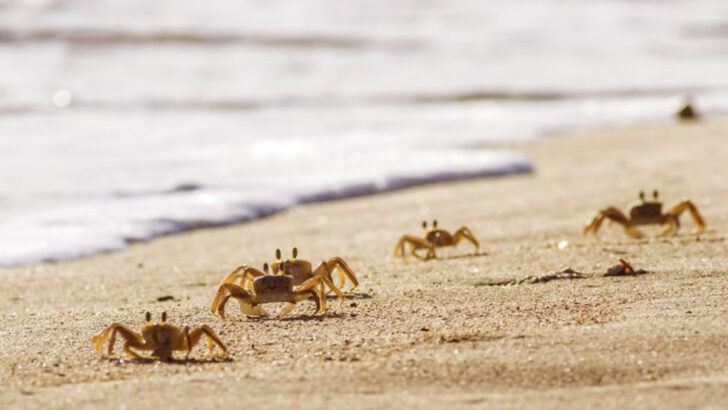Some beach creatures are pure magic. Shimmering crabs that skitter like wind-up toys, seashells with legs, and little fish that sparkle in the waves—kids can spend hours chasing these tiny wonders. It’s like a living treasure hunt where the prize wriggles, crawls, or disappears into the sand. But the beach holds secrets, too. Not every creature is friendly. Some sting. Some bite. Some just look like the perfect thing to pick up—until someone’s crying and running for the cooler. So which animals are safe to admire up close? And which ones should you steer clear of, no matter how cool they look? Let’s break down the beach’s brightest stars—and the ones best left alone.
Hermit Crab
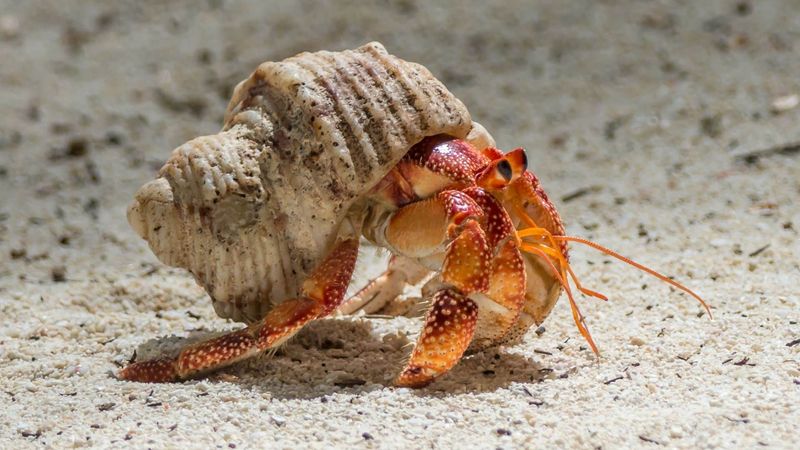
Hermit crabs are fascinating little creatures that kids will love to watch. These small crustaceans can be seen scuttling along the sand, carrying their adopted shells on their backs. Their curious behavior is captivating, as they often switch shells as they grow.
Hermit crabs are harmless and can be observed safely. They live in colonies, which makes them even more interesting to watch. Did you know? Hermit crabs use their claws to communicate by clicking them together. Their social nature makes them a perfect introduction to marine life for young explorers.
Starfish

Starfish, or sea stars, are a favorite among children due to their unique appearance and vibrant colors. These echinoderms can often be found in tide pools, attached to rocks or crawling slowly along the seabed.
Their ability to regenerate lost limbs is nothing short of magical, sparking wonder and curiosity. It’s important to admire starfish without disturbing them, as they play a crucial role in the marine ecosystem. These fascinating creatures remind us of the delicate balance of life in our oceans.
Sand Dollar
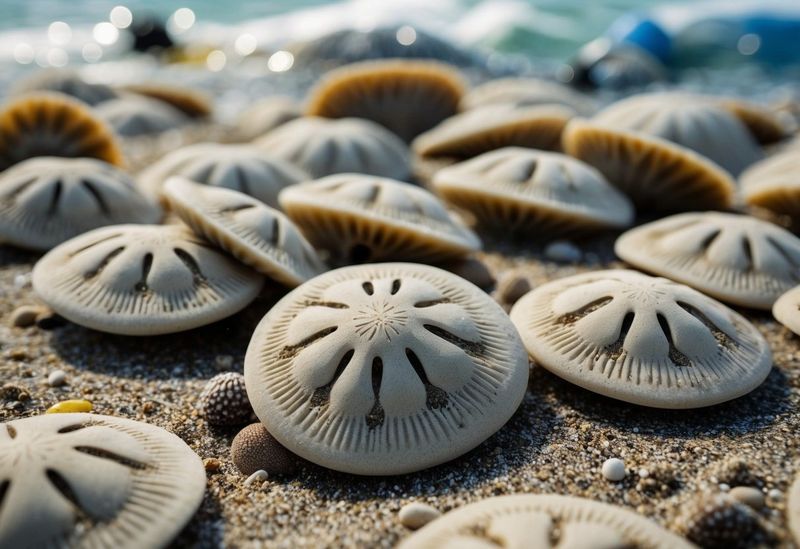
Sand dollars are intriguing flat, round sea urchins that can be found along many beaches. Their unique shape and delicate patterns make them a delightful treasure to discover. Children enjoy searching for their sun-bleached skeletons, often using them as keepsakes.
These creatures are alive when found submerged in the sand and should be handled with care. Sand dollars have a remarkable internal structure that filters food from the water, showcasing nature’s ingenuity. Spotting a sand dollar is like finding a hidden gem on the shore.
Sea Turtle
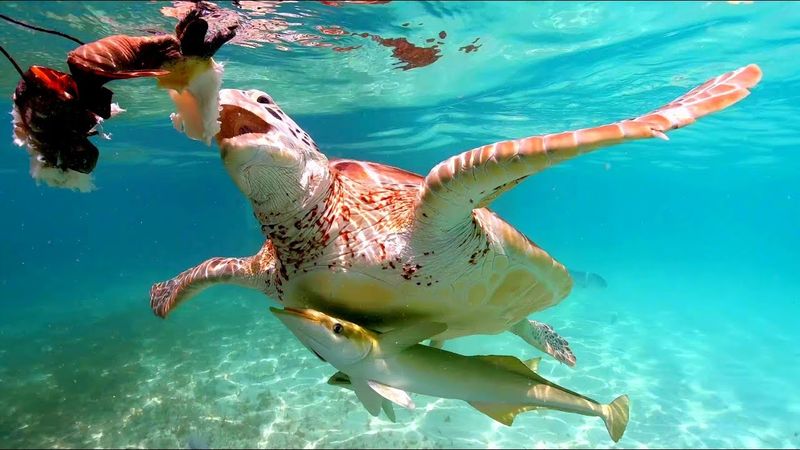
The majestic sea turtle is a sight to behold for any beachgoer. These ancient reptiles have roamed the seas for millions of years, and their gentle nature is evident in their slow, graceful movements.
Kids will be fascinated by their large, flippered limbs and patterned shells. Many beaches have conservation programs to help protect these creatures, offering opportunities to learn and participate. Watching a sea turtle nest or hatch is an unforgettable experience, fostering a deep love and respect for marine life.
Pelican
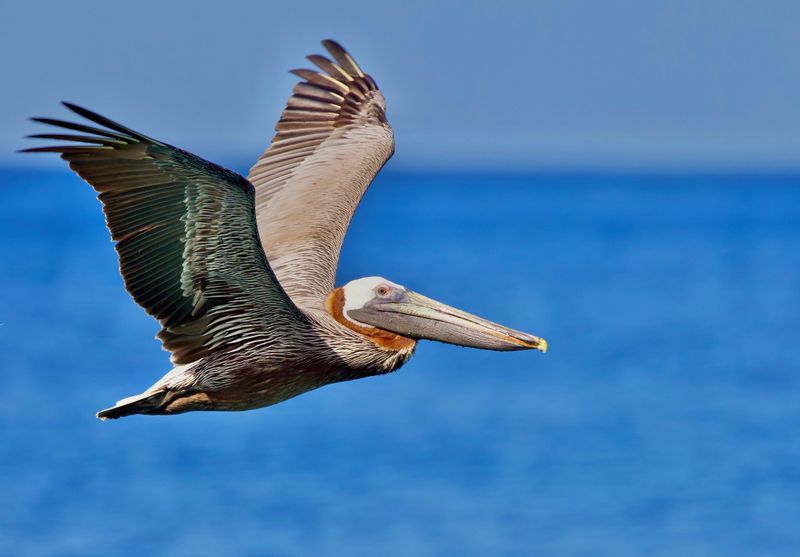
Pelicans are large, charismatic birds known for their distinctive throats and long beaks. Their impressive wingspans and synchronized diving make them a spectacle to watch as they hunt for fish in the ocean.
Children will delight in observing their social behavior, as pelicans often gather in groups. These birds are a wonderful reminder of the diversity of life found along coastlines. Fun fact: Pelicans can hold more than three gallons of water in their beaks at one time!
Jellyfish
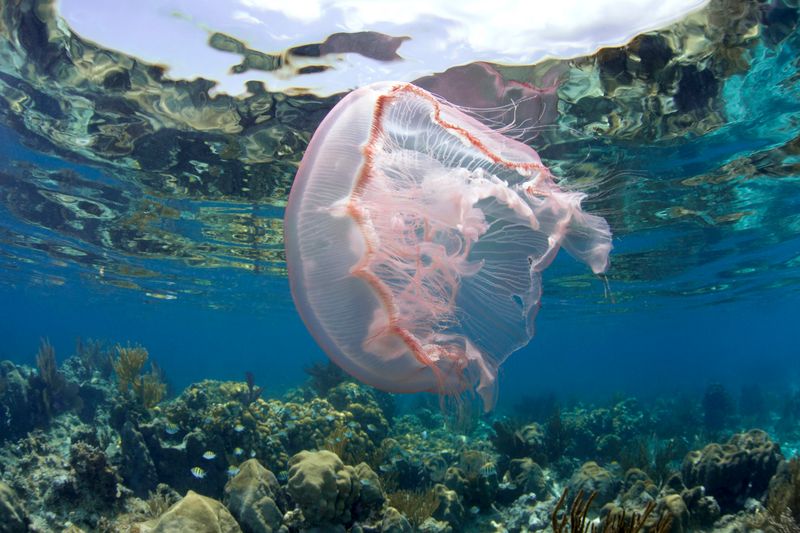
Jellyfish are mesmerizing yet mysterious creatures, gliding effortlessly through the water. Their translucent bodies and flowing tentacles create an otherworldly appearance that captivates observers.
While beautiful, jellyfish can sting, so it’s crucial to admire them from a distance. Moon jellies, the most common, are relatively harmless but still command respect. Learning about jellyfish can spark interest in marine biology and ocean preservation.
Dolphin
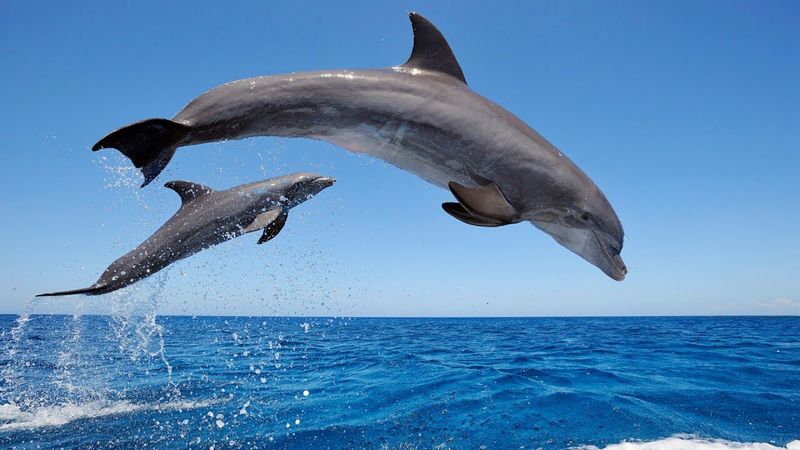
Dolphins are intelligent and playful marine mammals that captivate the hearts of young and old alike. Known for their friendly nature and acrobatic displays, they often swim alongside boats, delighting onlookers.
Their complex social structures and communication skills can teach children about marine life interactions. Seeing a dolphin in the wild is a magical experience, leaving a lasting impression about the wonders of the ocean. Dolphins remind us of the importance of preserving marine habitats for future generations to enjoy.
Sea Anemone

Sea anemones resemble underwater flowers, with their colorful tentacles swaying in the ocean currents. They create a vibrant underwater landscape, enchanting young minds. Despite their flower-like appearance, anemones are predatory animals, capturing food with their tentacles.
Kids can safely observe them in tide pools, marveling at their beauty and ecological role. Fun fact: Some fish, like clownfish, live symbiotically with anemones, finding protection among their tentacles.
Pufferfish
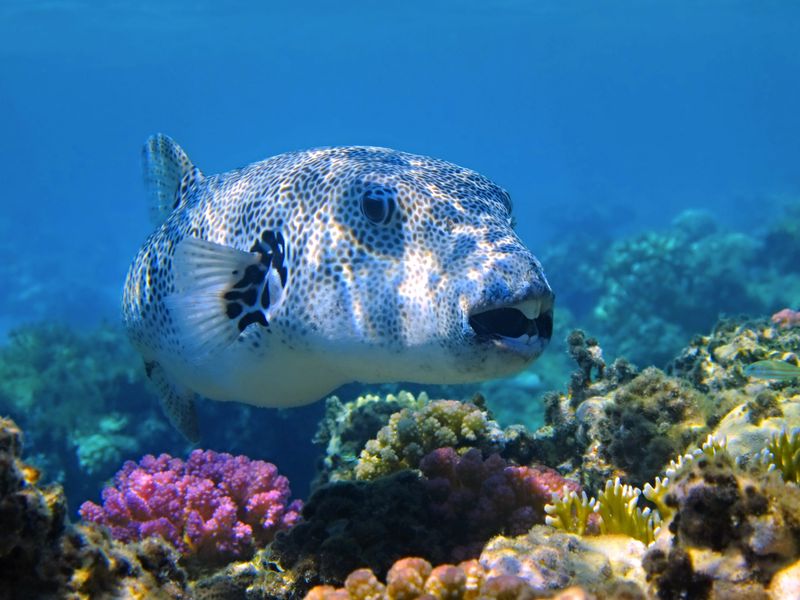
Pufferfish are unique and intriguing creatures, known for their ability to inflate when threatened. Their quirky appearance, with bulging eyes and spiny bodies, fascinates kids and adults alike.
While they are a marvel to observe, it’s crucial to keep a safe distance, as some species are highly toxic. Learning about pufferfish can spark curiosity about the ocean’s diverse inhabitants and the adaptations that help them survive.
Sea Urchin
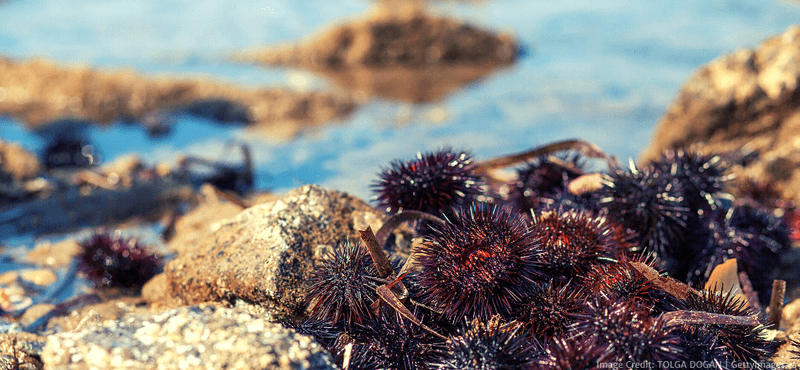
Sea urchins are spiny, spherical creatures that inhabit rocky shorelines and coral reefs. Their appearance is both fascinating and intimidating, with long, sharp spines that deter predators.
Children can safely observe them in tide pools, learning about their role in maintaining the underwater ecosystem. Fun fact: Sea urchins have a unique feeding structure called Aristotle’s lantern, which helps them graze on algae and other organic material.
Crab

Crabs are common beach dwellers, known for their sideways shuffle and distinct claws. These crustaceans are an essential part of the coastal ecosystem, playing a role in recycling nutrients.
Children enjoy watching their antics as they dig into the sand or interact with other crabs. It’s important to observe them gently, respecting their role in nature. Crabs come in various colors and sizes, adding to their intrigue and appeal for curious minds.
Portuguese Man O’ War

The Portuguese Man O’ War is a striking yet dangerous marine organism that resembles a jellyfish. Its vibrant, translucent body and long, trailing tentacles make it unmistakable. However, these tentacles can deliver a painful sting, even when washed ashore.
It’s crucial for children and adults to admire this creature from a safe distance. Their presence serves as a reminder of the ocean’s power and the need for caution when exploring marine environments.
Lionfish

Lionfish are beautiful but venomous fish, known for their striking appearance and invasive behavior. Their flowing fins and bold stripes make them a standout in any ocean environment.
However, their spines contain venom, posing a threat to both humans and marine life. Originally from the Indo-Pacific, they have spread to other regions, disrupting local ecosystems. It’s important to be aware of their presence and avoid contact.
Box Jellyfish
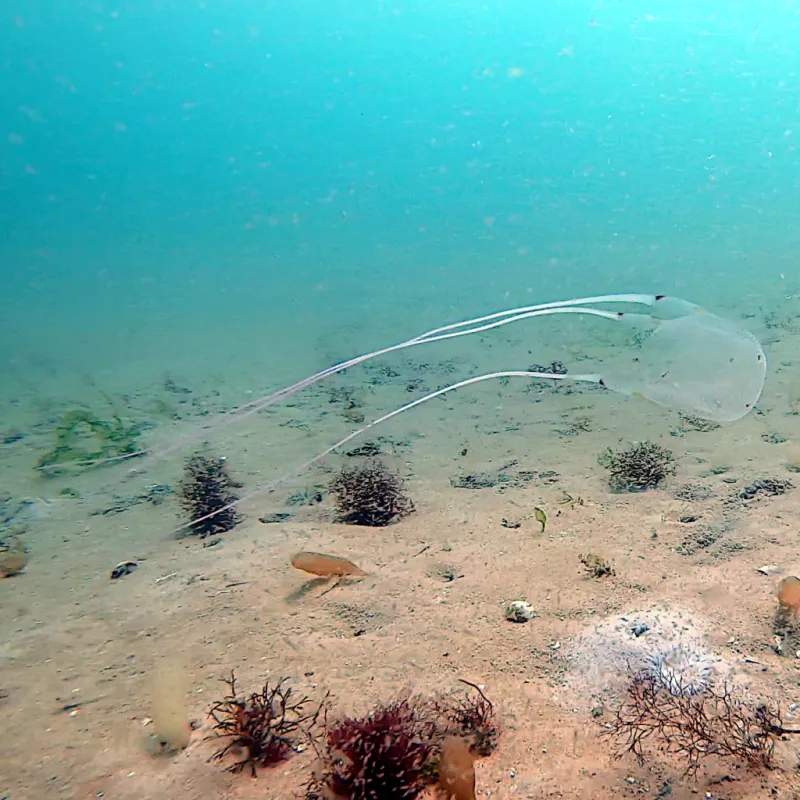
Box jellyfish are among the most venomous creatures in the sea, known for their potent sting. Their cube-shaped bodies and long tentacles glide silently through the water, making them difficult to spot.
It’s essential to give these creatures a wide berth, as their sting can be life-threatening. Learning to identify box jellyfish can be a vital skill for beachgoers, ensuring a safe and enjoyable experience along the shore.
Blue-Ringed Octopus
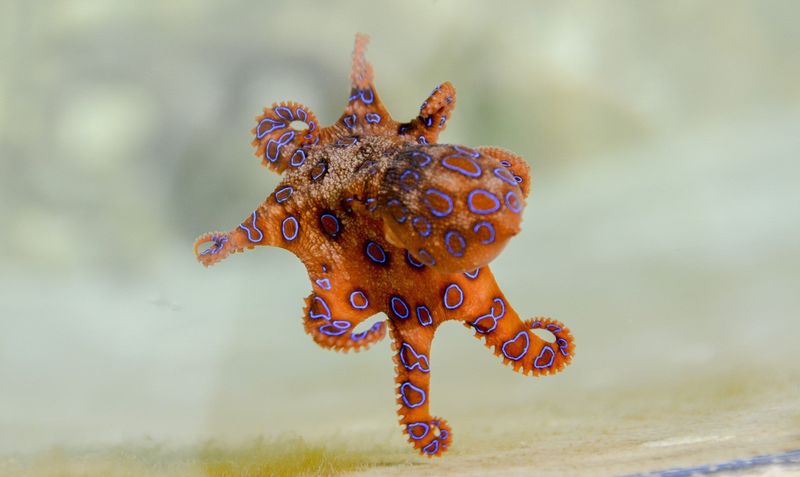
The blue-ringed octopus is a small yet highly venomous creature, distinguished by its vibrant blue rings. These rings serve as a warning to potential threats, indicating their toxic nature.
Despite their small size, they carry enough venom to cause serious harm, so it’s crucial to admire them from afar. Their presence is a reminder of the ocean’s hidden dangers and the importance of respectful observation.
Stonefish
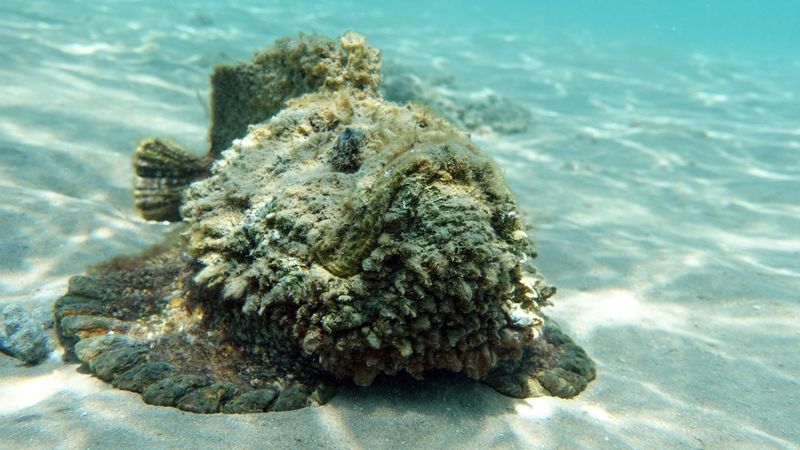
Stonefish are masters of camouflage, blending seamlessly with the ocean floor. Their rough, textured skin makes them nearly invisible, hiding them from both predators and humans.
However, these fish are among the most venomous in the world, with spines capable of delivering a painful sting. Beachgoers should be cautious when wading in shallow waters, watching their step to avoid accidental encounters with these hidden creatures.
Giant Pacific Octopus
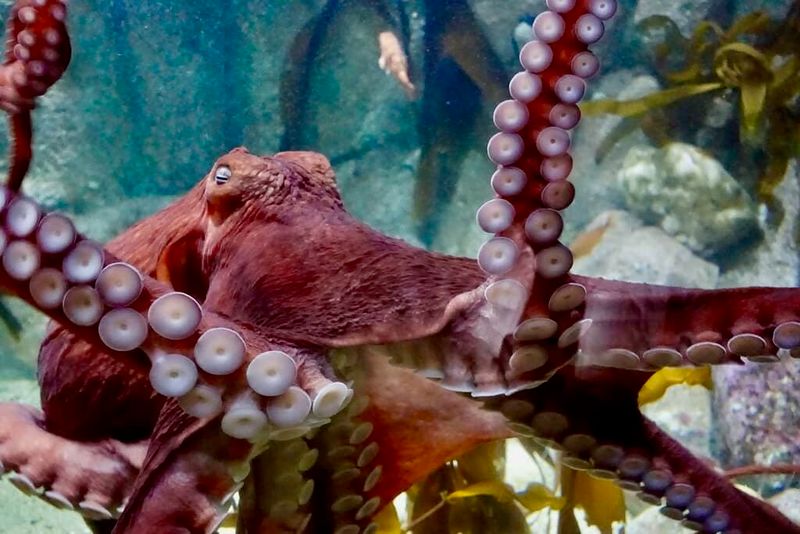
The Giant Pacific Octopus is a mesmerizing creature with a flair for intelligence and agility. Did you know it can solve puzzles and open jars? Its vibrant colors and fluid movements make it a spectacle to behold. Despite its size, the octopus can blend seamlessly into its surroundings.
Children will be fascinated by its ability to change color and texture, a skill used for communication and camouflage. However, it’s wise to admire this remarkable creature from afar, respecting its space and ensuring a safe encounter.
The Giant Pacific Octopus thrives in the Pacific Ocean’s nutrient-rich waters.

